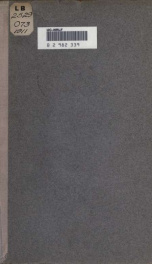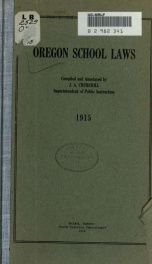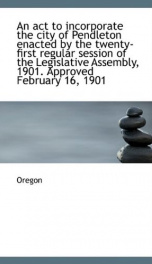oregon

Oregon (pronounced /ˈɒrɨɡən/ ( listen) ORR-i-gən) is a state in the Pacific Northwest region of the United States. It is located on the Pacific coast, with Washington to the north, California to the south, Nevada on the southeast and Idaho to the east. The Columbia and Snake rivers delineate much of Oregon's northern and eastern boundaries respectively. The area was inhabited by many indigenous tribes before the arrival of traders, explorers and settlers; the Oregon Territory was created in 1848, and Oregon became the 33rd state on February 14, 1859. Salem is the state's capital and third-most-populous city; Portland is the most populous. Portland is the 30th-largest U.S. city, with a population of 575,930 (2008 estimate) and a metro population of 2,175,133 (2007 estimate), the 23rd-largest U.S. metro area. The valley of the Willamette River in western Oregon is the most densely populated and agriculturally productive region of the state, and is home to eight of the ten most populous cities. Oregon's 2000 population was about 3.5 million, a 20.3% increase over 1990; it is estimated to have reached 3.8 million by 2008.[6] Oregon's largest for-profit private employer is Intel, located in the Silicon Forest area on Portland's west side. The state has 199 public school districts, with Portland Public Schools as the largest. There are 17 community colleges, and seven publicly financed colleges in the Oregon University System. Oregon State University in Corvallis and the University of Oregon in Eugene are the two flagship universities of the state, while Portland State University has the largest enrollment.[7] Major highways include Interstate 5 which runs the entire north-south length of the state, Interstate 84 that runs east-west, U.S. Route 97 that crosses the middle of the state, U.S. Route 101 that travels the entire coastline, and U.S. Route 20 and U.S. Route 26 that run east-west, among many other highways. Portland International Airport is the busiest commercial airport in the state and is operated as part of the Port of Portland, the state's busiest port. Rail service includes Union Pacific Railroad and BNSF Railway freight service, Amtrak passenger service, as well as light rail and street car routes in the Portland metro area. Oregon enjoys a diverse landscape including a scenic and windswept Pacific coastline, the volcanoes of a rugged and glaciated Cascade Mountain Range, dense evergreen forests, and high desert across much of the eastern portion of the state. The towering Douglas firs and redwoods along the rainy Western Oregon coast provide a dramatic contrast with the lower density and fire prone pine tree and juniper forests covering portions of the Eastern half of the state. The eastern portion of the state also includes semi-arid scrublands, prairies, deserts, and meadows. These drier areas stretch east from Central Oregon. Mount Hood is the highest point in the state at 11,249 feet (3,429 m). Crater Lake National Park is the only national park in Oregon. Oregon is the United States' leader in forest fires; in 2007 the state had over 1,000 of them.[8] Humans have inhabited the area that is now Oregon for at least 15,000 years. In recorded history, mentions of the land date to as early as the 16th century. During the 18th and 19th centuries European powers and later the United States quarreled over possession of the region until 1846 when the U.S. and Great Britain finalized the division of the region. Oregon became a state in 1859 and is now home to over 3.5 million residents. Human habitation of the Pacific Northwest began at least 15,000 years ago, with the oldest evidence of habitation in Oregon found at Fort Rock Cave and the Paisley Caves in Lake County. Archaeologist Luther Cressman dated material from Fort Rock to 13,200 years ago.[10] By 8000 B.C. there were settlements throughout the state, with populations concentrated along the lower Columbia River, in the western valleys, and around coastal estuaries. By the 16th century Oregon was home to many Native American groups, including the Bannock, Chasta, Chinook, Kalapuya, Klamath, Molalla, Nez Perce, Takelma, and Umpqua.[11][12][13][14] The first European explorers were Spanish, during the late 17th century. Further exploration from Alta California took place during the 18th century. British James Cook explored the coast in 1778 in search of the Northwest Passage. The Lewis and Clark Expedition traveled through the region also in search of the Northwest Passage. They built their winter fort at Fort Clatsop, near the mouth of the Columbia River. Overland exploration was also conducted by British explorer David Thompson. In 1811, David Thompson, of the North West Company, became the first European to navigate the entire length of the Columbia River. Stopping on the way, at the junction of the Snake River, he posted a claim to the region for Great Britain and the North West Company. Upon returning to Montreal, he publicized the abundance of fur-bearing animals in the area. Also in 1811, New Yorker John Jacob Astor financed the establishment of Fort Astoria at the mouth of the Columbia River as a western outpost to his Pacific Fur Company;[15] this was the first permanent European settlement in Oregon. In the War of 1812, the British gained control of all of the Pacific Fur Company posts. The Treaty of 1818 established joint British and American occupancy of the region west of the Rocky Mountains to the Pacific Ocean. By the 1820s and 1830s, the Hudson's Bay Company dominated the Pacific Northwest from its Columbia District headquarters at Fort Vancouver (built in 1825 by the District's Chief Factor John McLoughlin across the Columbia from present-day Portland). In 1841, the master trapper and entrepreneur Ewing Young died leaving considerable wealth and no apparent heir, and no system to probate his estate. A meeting followed Young's funeral at which a probate government was proposed. Doctor Ira Babcock of Jason Lee's Methodist Mission was elected Supreme Judge. Babcock chaired two meetings in 1842 at Champoeg (half way between Lee's mission and Oregon City) to discuss wolves and other animals of contemporary concern. These meetings were precursors to an all-citizen meeting in 1843, which instituted a provisional government headed by an executive committee made up of David Hill, Alanson Beers, and Joseph Gale. This government was the first acting public government of the Oregon Country before annexation by the government of the United States. Also in 1841, Sir George Simpson, Governor of the Hudson's Bay Company, reversed the Hudson's Bay Company's longstanding policy of discouraging settlement because it interfered with the lucrative fur trade. He directed that some 200 Red River Colony settlers be relocated to HBC farms near Fort Vancouver, (the James Sinclair expedition), in an attempt to hold Columbia District. Starting in 1842–1843, the Oregon Trail brought many new American settlers to Oregon Country. For some time, it seemed that Britain and the United States would go to war for a third time in 75 years (see Oregon boundary dispute), but the border was defined peacefully in 1846 by the Oregon Treaty. The border between the United States and British North America was set at the 49th parallel. The Oregon Territory was officially organized in 1848. Settlement increased because of the Donation Land Claim Act of 1850, in conjunction with the forced relocation of the native population to Indian reservations in Oregon. The state was admitted to the Union on February 14, 1859. Founded as a refuge from the disputes over slavery that were tearing apart other places in the United States, such as Kansas, Oregon had a "whites only" clause in its state Constitution at the time of its admission; the only state thus admitted.[16] At the outbreak of the American Civil War, regular U.S. troops were withdrawn and sent east. Volunteer cavalry were recruited in California and sent north to Oregon to keep peace and protect the populace. The First Oregon Cavalry served until June 1865. In the 1880s, the proliferation of railroads assisted in marketing of the state's lumber and wheat, as well as the more rapid growth of its cities. In 1902, Oregon introduced a system of direct legislation by the state’s citizens by way of initiative and referendum, known as the Oregon System. Oregon state ballots often include politically conservative proposals side-by-side with politically liberal ones, illustrating the wide spectrum of political thought in the state. Industrial expansion began in earnest following the construction of the Bonneville Dam in 1933–1937 on the Columbia River. Hydroelectric power, food, and lumber provided by Oregon helped fuel the development of the West, although the periodic fluctuations in the U.S. building industry have hurt the state's economy on multiple occasions. The origin of the name "Oregon" is unknown. One theory is that the name comes from the French word "ouragan" (hurricane). French explorers called the Columbia River "Hurricane River" (le fleuve aux ouragans), because of the strong winds of the Columbia Gorge. According to the Oregon Blue Book, the source for the earliest written use of the word was Major Robert Rogers, an English army officer. In his 1765 proposal for a journey, Rogers wrote:[17] The rout . . . is from the Great Lakes towards the Head of the Mississippi, and from thence to the River called by the Indians Ouragon. . . . One account, endorsed as the "most plausible explanation" in the book Oregon Geographic Names, was advanced by George R. Stewart in a 1944 article in American Speech. According to Stewart, the name came from an engraver's error in a French map published in the early 1700s, on which the Ouisiconsink (Wisconsin) River was spelled "Ouaricon-sint", broken on two lines with the -sint below, so that there appeared to be a river flowing to the west named "Ouaricon". According to the Oregon Tourism Commission (also known as Travel Oregon), present-day Oregonians (pronounced /ˌɒrɨˈɡoʊniɨnz/)[18] pronounce the state's name as "OR-UH-GUN never OR-EE-GONE".[19] After being drafted by the Detroit Lions in 2002, former Oregon Ducks quarterback Joey Harrington distributed "ORYGUN" stickers (sold by the University of Oregon Bookstore, which credits the spelling as a joke[20] "meant for Oregonians everywhere who get a kick out of this hilarious mispronunciation of our state.") to members of the media as a reminder of how to pronounce his home state.[21][22]
do you like this author?
What readers are saying
What do you think? Write your own comment on this book!
write a commentWhat readers are saying
What do you think? Write your own comment on this author!
write a commentBook list

The Oregon school laws with rules and regulations of the State Board of Education, blank forms, etc.
Series:
Unknown
Year:
Unknown
Raiting:
4/5
Show more
add to favoritesadd In favorites

Oregon school laws with rules and regulations of the state Board of Education
Series:
Unknown
Year:
Unknown
Raiting:
3.5/5
Show more
add to favoritesadd In favorites

Messages and Documents
Series:
Unknown
Year:
Unknown
Raiting:
3.5/5
Book digitized by Google from the library of University of Michigan and uploaded to the Internet Archive by user tpb.
Show more
add to favoritesadd In favorites
Book list

The Oregon school laws with rules and regulations of the State Board of Education, blank forms, etc.
Series:
Unknown
Year:
Unknown
Raiting:
4/5
Show more
add to favoritesadd In favorites

Oregon school laws with rules and regulations of the state Board of Education
Series:
Unknown
Year:
Unknown
Raiting:
3.5/5
Show more
add to favoritesadd In favorites

Messages and Documents
Series:
Unknown
Year:
Unknown
Raiting:
3.5/5
Book digitized by Google from the library of University of Michigan and uploaded to the Internet Archive by user tpb.
Show more
add to favoritesadd In favorites

Water laws of the state of Oregon, comp. from Lord's Oregon laws and session laws of 1911, 1913, 1915, 1917 and 1919; 1919, prepared in the office of the State water board, Salem, Oregon
Series:
Unknown
Year:
Unknown
Raiting:
3.5/5
Show more
add to favoritesadd In favorites

water laws of the state of oregon compiled from lords oregon laws and session
Series:
Unknown
Year:
Unknown
Raiting:
4/5
Show more
add to favoritesadd In favorites

the oregon school laws with rules and regulations of the state board of educatio
Series:
Unknown
Year:
Unknown
Raiting:
4/5
Show more
add to favoritesadd In favorites

the governance of india as it is and as it may be a handbook of progressive po
Series:
Unknown
Year:
Unknown
Raiting:
5/5
Show more
add to favoritesadd In favorites

oregon school laws with rules and regulations of the state board of education
Series:
Unknown
Year:
Unknown
Raiting:
5/5
Show more
add to favoritesadd In favorites

an act to incorporate the city of pendleton enacted by the twenty first regular
Series:
Unknown
Year:
Unknown
Raiting:
5/5
Show more
add to favoritesadd In favorites
What readers are saying
What do you think? Write your own comment on this author!
write a commentif you like oregon try:
readers also enjoyed
What readers are saying
What do you think? Write your own comment on this author!
write a commentGenre
if you like oregon try:
readers also enjoyed
Do you want to read a book that interests you? It’s EASY!
Create an account and send a request for reading to other users on the Webpage of the book!

